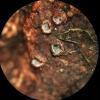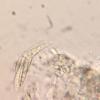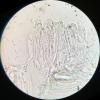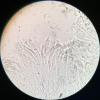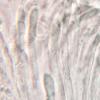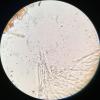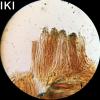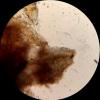
20-11-2025 13:07
Mick PeerdemanIn January i found these black markings on the dea

20-11-2025 12:38
Mick PeerdemanDear all,Last week i stumbled upon a leaf of ilex

17-11-2025 21:46
Philippe PELLICIERBonjour,Récolté sur bois pourrissant de feuillu

19-11-2025 23:21
 carl van den broeck
carl van den broeck
Dear guestIn Waardamme, Belgium, I found dozens of

19-11-2025 20:51
 Andreas Millinger
Andreas Millinger
Good evening,found this species on a felled trunk

19-11-2025 13:04
 Bruno Coué
Bruno Coué
Bonjour,je sollicite votre avis pour la récote

16-11-2025 21:09
 Robin Isaksson
Robin Isaksson
Anyone recognize this acc. to pictures.? Found on

18-11-2025 13:59
Nogueira HéctorNovember 14, 2025 Brazuelo (León) SPAIN Hymenosc

17-11-2025 19:14
herman lambertApothécie discoïde 0.6 cm diam., orangeFace hym�
Karstenia rhopaloides?
Ethan Crenson,
01-12-2024 19:58
Hi all,
Found yesterday by a friend in a wooded park in the Bronx, NYC, on a fallen branch of hardwood (Quercus, Liquidambar, Liriodendron and Prunus are common in those woods).
Clearly erumpent through the bark with a grayish hymenium. Spores are clavate and 4-9 septate. They seem fragile, prone to breaking. 19.5-38.1 x 4.8-6.3µm.
Asci and paraphyses surrounded by a glutinous epithecium which stains blue-green in IKI. Because of the staining of the epithecium it is difficult to tell if the ascus tip blues as well. Still working on that.
Paraphyses slightly constricted at the septa, ends clavate or swollen.
My sense is that this is Karstenia rhopaloides. The spores seem too narrow for K. lonicerae. But maybe rhopaloides is a European species that would not occur in the Bronx?
Ethan
Hans-Otto Baral,
01-12-2024 21:17

Re : Karstenia rhopaloides?
A section of the marginal lobes should show periphysoids that also extend on the sides of the hymenium (unlike Cryptodiscus), but I would exclude that genus also without seeing this feature.
I assume you meant K. lonicerae has narrower spores.
I mainly know that an apical ring reacts blue and the outer ascus wall hemiamyloid (blue then red during iodine diffusion), not the exudate/epithecium.
Ethan Crenson,
02-12-2024 04:21
Re : Karstenia rhopaloides?
Thank you... yes I did mean K. lonicerae has narrower spores. I will call this K. rhopaloides. It seems fairly safe to do that.

